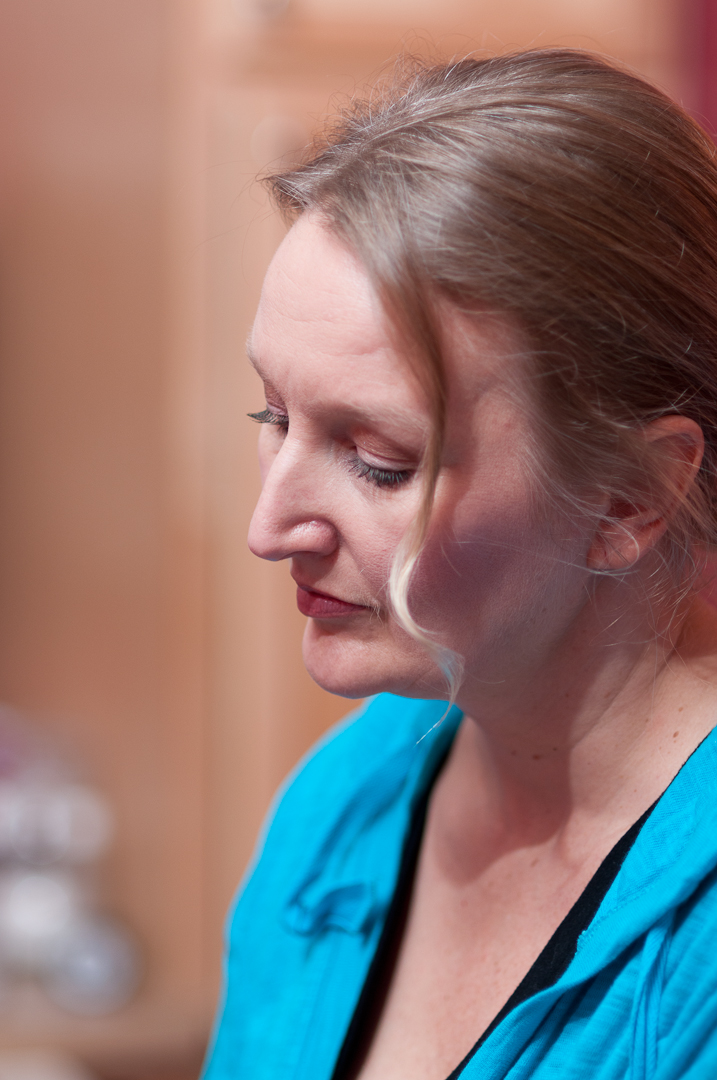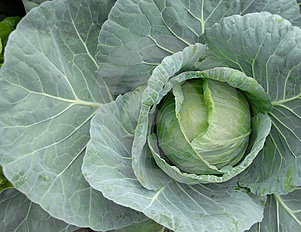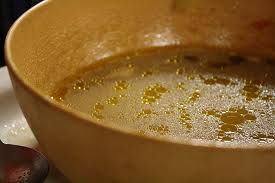 Brooke Kaufman, Balance Within Nutrition
Brooke Kaufman, Balance Within Nutrition
Written by Guest Blogger, Brooke Kaufman, Holistic Nutritionist
I first learned about the GAPS diet when I ran into an in-depth interview of Dr. Natasha Campbell-McBride (the creator of the GAPS diet) on Dr. Mercola’s website. You can listen to the interview here.
Why I started GAPS
After listening to the interview I was intrigued, and what she was saying about the connection between gut flora and mental health and behavior all rang true to me, and mirrored what I had learned in my studies as a Nutrition Consultant. My interest was piqued, and so a couple of months later when I started noticing that “something just wasn’t quite right” with my digestive system, the GAPS diet came to mind. I started preparing myself and my kitchen to begin the intro phase of the diet using the on-line resources, but decided it would probably be wisest to go ahead and purchase the GAPS book and the corresponding cookbook, Internal Bliss. I wanted to make sure that I wasn’t missing anything essential in this carefully laid out, gut healing protocol.
Wondering what the GAPS diet is? Read an introduction.
Healing Medicine for a Long-time Vegetarian
Luckily, I had gotten a pressure cooker from my mom for my birthday, because it is definitely a big help with implementing the GAPS diet, which requires that you pretty much constantly have a big pot of broth or soup cooking on the stovetop. I had never had or made bone broth before in my life. I had been a strict vegetarian for fourteen years, and was just beginning to experiment with adding some small amounts of high-quality animal protein into my diet. Normally, buying grass-fed beef bones and putting them in a pot on my stove would have been a very edgy thing for me…but this was no ordinary pot of bones. This was healing medicine that I was determined to cook up for my inflamed digestive system. There is something sacred and empowering about making medicinal food for yourself, and it is just as magical to make medicine for a loved one. It’s all about bringing the intention of love and healing into your kitchen.
Nourished Without Raw Greens?
I did the intro phase of the GAPS diet for a few weeks, and during that time felt more deeply nourished than I had ever felt in my life. I had to eat several times a day and was constantly making bone broth and soups/stews. I was amazed at how I could feel so nourished while eating absolutely no leafy greens, and eating nothing raw! In my previous way of eating and thinking, I truly felt that if I went even one day without a leafy green or a salad that I was seriously compromising my immune system, and missing out on much needed nutrition. While there is no denying the health benefits of eating leafy greens and raw fruits and vegetables, they are only beneficial to you IF you can properly digest and assimilate their nutrients.
When Can You Best Digest Raw?
Despite the naturally-occurring enzymes that plant foods contain that aid in digestion, some people still become uncomfortably bloated and gassy when eating these foods. Donna Gates, author of the Body Ecology Diet says, “The ancients were well aware that raw vegetables were difficult to digest; in Chinese Medicine, for example, it is well known that raw foods are best eaten by someone with strong “digestive fire.” A major cause of poor “digestive fire” is that our adrenals and thyroid are both poorly nourished and taxed by toxins and daily stress.”
Nourishing and healing the digestive system with gentle, easy to digest, soothing foods and probiotic foods is essential for health and the purpose and main goal of the GAPS diet.
What is Optimal Nutrition? Perception Shift.
My Experience with the GAPS diet (along with my other experiences and research) completely shifted my ideas about what optimal nutrition really is. It helped me to tune in to what is truly nourishing for my unique body type and genetic predisposition. It was like pressing the “reset button” on my digestive system. After doing the intro diet for a few weeks, my bloating and burping symptoms after meals went away. I did experience some initial detox symptoms (low energy and some dizziness and nausea) for the first week, as bad bacteria in my intestines died off and released their toxins, and as I started to get the hang of the diet…keeping a nourishing soup on the stove at all times, I began to feel stronger and healthier than ever.
I was only able to do the introduction part of the diet for three weeks, and then I went on a road trip which pretty much took me right off the diet, though I did stay away from all grains, sugars, and processed foods.
I'll be giving it another "go" with Elisabeth Veltman, owner of The Tender Foodie & The Tender Palate, and with YOU during our GAPS Diet Challenge. I want to help further heal and seal my gut, as well as help you. If you are allergic to nuts, which is a big part of GAPS or are sensitive to other foods on the diet, we'll be offering custom phone calls and nut-free options for you.
Here's how you sign up for the Challenge (click here)!
Or Just Sign Up for Our Upcoming Webcasts Separately!
June 14, 2013: The Gut / Brain Connection wtih Toni Fairman, NTP, Certified GAPS Practitioner
June 21, 2013: The Art of Supplementation & Detoxification
June 28, 2013: MINDFUL MEDITATION - Dealing w/Change & the Emotional Issues of Eating with Carol Hendershot, Mindful Meditation Instructor
Why Many People Do GAPS
Doing the GAPS diet for many people is motivated by their desire to help heal their child’s digestive and/or behavioral issues. For parents doing the diet for and alongside their child, I applaud you and admire your willingness to take the health of your family into your own hands. Although it is not easy at times, dedicating several weeks or months to healing is a small price to pay in comparison to years of struggling with illnesses and disorders for which the western medical doctors have no cures for; only prescription medications that are temporary surface solutions to underlying long-term issues. There are resources and solutions in the GAPS diet book, and on-line for strategies to successfully do the diet with your child.
How I Got Started
1. BUY THE BOOK & RECIPES
Whether you decide to do the diet on your own, work with a GAPS Practitioner, or join our virtual support group (The GAPS Challenge), its really essential to buy the book and read it. Our challenge helps break down the more difficult concepts of the book, and helps guide you through the gobs of information the book provides, but there is no substitute for using the book as a reference.
2. GET A PROBIOTIC
The first thing I did in preparation to begin the GAPS Introduction diet, was to go to my naturopathic doctor’s office and purchase a medical grade probiotic supplement. It was a little pricey (around $40 for a month’s supply) but definitely worth it. Some people advise that if you have severe digestive issues, to wait till you’ve completed the intro phase of the diet to begin taking the probiotic. I decided to begin taking it right away, though began with only one pill a day and didn’t increase to two pills per day for a couple of weeks.
Read "Hidden Allergens Abound in Supplements & Medication" (If you are really sensitive / allergic to dairy, see recommendations in the article)
3. MAKE A GROCERY LIST
The next thing I did was make a grocery list of the foods that I would need to buy at the store to keep myself properly nourished. The list of ingredients was short (there’s not much you can eat during this phase), and I seriously underestimated the quantity of food I would need to buy, which was fine because I prefer to shop frequently anyway for meats and vegetables so that my ingredients are always fresh.
4. DOWNLOAD A MEAL PLAN
To help make life a lot easier, use a meal plan. I've created & curated a meal plan for 3 weeks during the challenge for your GAPS intro diet adventure. We'll post a few recipes along the way for everyone to try, as well. Start with the bone broths below.
5. MAKE BONE BROTH
Then I began making a big pot of bone broth. This was my first adventure into the world of bone broth, which I found to be quite fascinating. I was taught in my nutrition studies how deeply nourishing bone broths were, especially for those who are recovering from serious injury or illness. I found a way to make a rich bone broth that was very palatable to my tastes (smooth, rich and not too strong of a meaty flavor). You can see the recipe here.
You can find more information on how to do the introduction to the GAPS diet here: http://www.gapsdiet.com/INTRODUCTION_DIET.html
Once you are going strong on the Introduction phase of the GAPS diet, you can begin to test more GAPS-approved foods. To test a food before introducing it to the diet, do the Sensitivity Test.
Here are some bone broth recipes:
Nourishing Bone Broth (pressure cooker)
Nutrient Rich Beef Bone Broth (slow cooker / crock pot)
Tip: Roast Your Beef Bones Before Making Broth
6. DO SELF-SENSITIVITY TESTING
Take a drop of the food in question (if the food is solid, mash and mix with a bit of water) and place it on the inside of your wrist at bedtime. Let the drop dry on the skin, then go to sleep. In the morning check the spot: if there is an angry red reaction, then avoid that food for a few weeks, and then try again. If there is no reaction, then go ahead and introduce it gradually starting from a small amount.
If there is no symptom with the sensitivity test, then you continue to introduce more and more foods from the list of allowed foods, until you are doing the full GAPS diet. A list of allowed foods can be found here: http://www.gapsdiet.com/The_Diet.html
 Wednesday, June 12, 2013 at 9:19PM
Wednesday, June 12, 2013 at 9:19PM  Elisabeth Veltman, The Tender Foodie tagged
Elisabeth Veltman, The Tender Foodie tagged  GAPS Diet Introduction,
GAPS Diet Introduction,  GAPS Diet Online Support Group,
GAPS Diet Online Support Group,  GAPS Diet Recipe
GAPS Diet Recipe  Email Article
Email Article  Print Article in
Print Article in  Health,
Health,  The GAPS Diet
The GAPS Diet 








